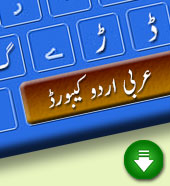Live Makkah
Live Madinah
Urdu Font Download
Latest News:
Padubidri: Fishing boat capsizes; all 7 fishermen on board rescued Alleged atrocity on lawyer: Punjalakatte SI suspended Moral policing at jewellery shop: 4 arrested Bajrang Dal activists try to assault youth, girlfriend in Mangaluru SC to hear Bilkis Bano’s plea against release of 11 convicts on 13 Dec Nusrat Noor: First Muslim Woman to Top Jharkhand Public Service Commission
Latest News:
Padubidri: Fishing boat capsizes; all 7 fishermen on board rescued Alleged atrocity on lawyer: Punjalakatte SI suspended Moral policing at jewellery shop: 4 arrested Bajrang Dal activists try to assault youth, girlfriend in Mangaluru SC to hear Bilkis Bano’s plea against release of 11 convicts on 13 Dec Nusrat Noor: First Muslim Woman to Top Jharkhand Public Service Commission
Muslims’ Preference for Mamata Precedes Rise of BJP in West Bengal

New Delhi, 15 Feb 2021 [Soroor Ahmed | Clarion India]: If the Bharatiya Janata Party is trying to polarise votes along communal lines in West Bengal, it has reason to do so because ever since the Nandigram and Singur movements against the land acquisition in 2007-08, Muslims, who form 27.01 per cent of the state’s population, have largely been voting for Trinamool Congress-Congress combine. That was the time when the popularity of the BJP was very low across the country. In West Bengal the scene was all too depressing for the saffron party.
Ever since 1977 till 2006 Assembly poll in the state Muslims, as other castes and communities, have largely been voting for the Left Front.
But the Lok Sabha election of 2009 changed this trend. The Trinamool Congress-Congress jointly got 58 per cent Muslim votes. Thus, the combine registered victory in 26 out of 42 parliamentary seats.
The Left Front perhaps failed to read the writing on the wall. In 2011 Assembly election, the TMC-Congress alliance won 226 seats (184+42) in the 294-member House. As high as 50 per cent Muslims voted for the combine then. Muslims, started preferring the TMC-Congress combine not because of any religious reason. A sizeable number of Muslims in the rural areas voted for Mamata Banerjee because many of those farmers who could not get adequate compensation or who were not interested in giving their land in Singur and Nandigram were Muslims.
The struggle against the Left Front’s land acquisition policy was launched and led by none else but Mamata Banerjee.
Large chunks of land in Singur in Hooghly district and Nandigram in East Midnapore district were acquired for the Nano car project and Special Economic Zone respectively. The irony is that the Left failed to see the changing land reality in the state though it was Operation Barga—a campaign to empower sharecroppers—which helped the Communists in the 1980s to consolidate the position and rule for 34 long years.
Ever since the Nandigram-Singur movement Mamata has continued to consolidate her position. She grew so confident that in the Lok Sabha election of 2014 her party won 34 out of 42 seats, even when it contested alone, that is not in alliance with the Congress.
This was the figure when the Narendra Modi wave was sweeping the country. The TMC won 211 seats in the 2016 Assembly election though it once again went alone.
The downward slide started in 2019 Lok Sabha poll in which TMC could bag only 22 seats against the BJP‘s 18.
So Mamata’s case was not similar to that of Lalu Prasad in Bihar, or even for that matter Mulayam Singh Yadav in Uttar Pradesh, both of whom had emerged as the champions of Muslims in early 1990s when they stood up against the BJP at the height of the Ram Janambhoomi-Babri Masjid Movement.
The situation in West Bengal was different as it was a secular party versus secular party then—that is Left vs Congress or TMC.
In fact, Muslims strongly opposed Mamata in 1999 and 2004 Lok Sabha polls when she had joined the National Democratic Alliance and became the railway minister in the Atal Bihari Vajpayee government.
As Muslims have since 2009 Lok Sabha election been preferring Mamata over the other secular alternatives she too started protecting this vote-bank. Though it was a purely political compulsion and nothing to do with communal angle because BJP was nowhere in picture then, yet ever since 2014 the saffron party has started accusing her of minority appeasement. It was on the basis of this campaign that the BJP managed to do so well in the 2019 Lok Sabha poll.
In the 2021 Assembly election, the TMC is locked in a last-ditch battle with the BJP. The problem with the saffron party is that it failed to realise that Mamata does not only enjoy the support of a big chunk of Muslims, but also of other communities.
True, the incumbency factor may work against her, but the extra-ordinary efforts made by the BJP to polarise the votes has the potential to become counter-productive. A section of Muslims, especially of the Murshidabad-Malda-North Dinajpur belt, who till lately have been voting for the Congress are most likely to throw their votes behind the TMC.
These three districts have more than 50 per cent Muslim population. Gradually not only Muslim farmers but the urban voters of the community have also tilted towards her party.
Much depends on how far the BJP succeeds in its campaign to polarise the society.
Prayer Timings
| Fajr | فجر | |
| Dhuhr | الظهر | |
| Asr | أسر | |
| Maghrib | مغرب | |
| Isha | عشا |







